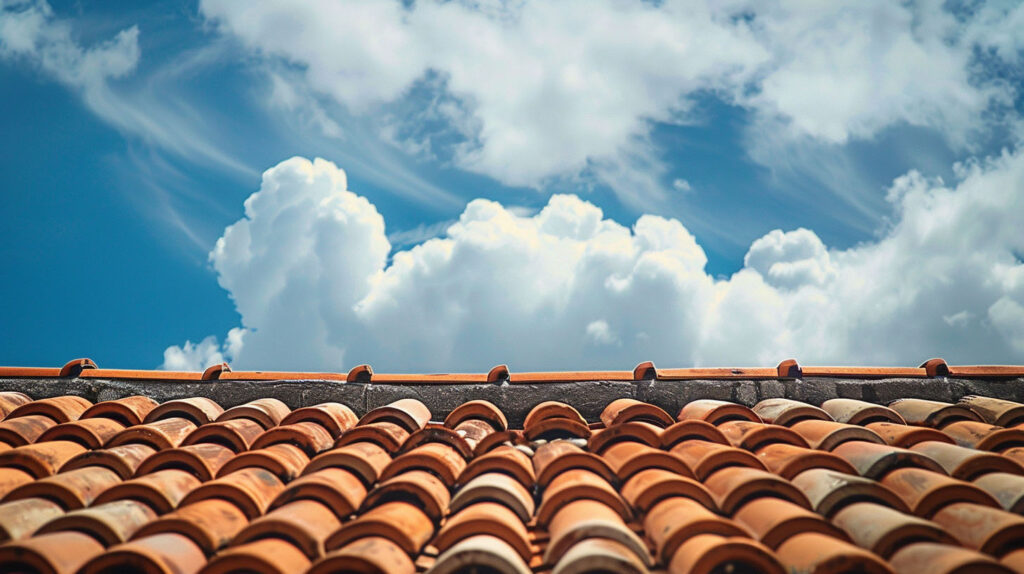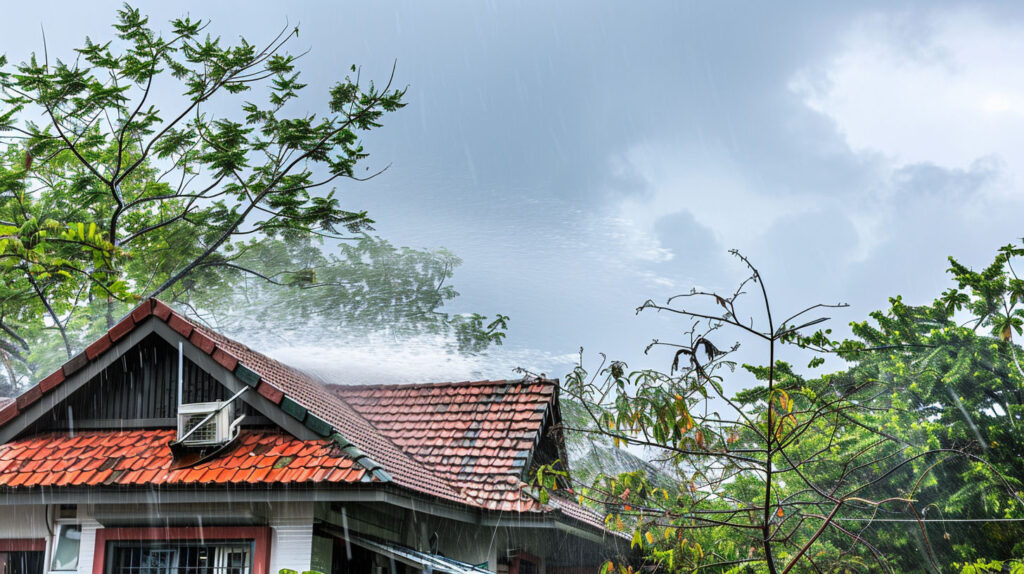Tile roofs have become a favored choice for many homeowners in San Diego, CA especially in regions prone to severe weather. Understanding the implications of hurricane-force winds on these roofing materials is crucial for maintaining structural integrity and aesthetic appeal. With the potential for significant roof damage during major storms, awareness of proper preparations and professional roofing solutions can provide peace of mind to homeowners. This ensures that their homes remain safe and aesthetically pleasing even in the face of nature’s fury.
Understanding Hurricane-Force Winds in San Diego
High wind events in San Diego can exceed 100 mph, posing a significant challenge for homeowners. These hurricane-force winds, often exacerbated by tropical storms and thunderstorms, can lead to severe structural damage, particularly to roofing materials. Understanding the typical wind patterns in the region, as highlighted by agencies like FEMA, is crucial for homeowners. Precautions must be taken to safeguard properties from potential water infiltration and related damage, ensuring the longevity and durability of roofing solutions during major storms.
Contact UsTypical Wind Patterns and Storm Risks in the Region
Wind patterns in San Diego, CA are influenced by coastal geography, leading to frequent strong winds and storm risks. Tropical storms and thunderstorms can result in wind speeds over 60 mph, posing a significant threat to residential roofing systems. Homeowners should be aware that federal emergency management agency guidelines recommend preparing for such severe weather events. Understanding local wind dynamics is crucial for assessing the risks of wind damage to roofing materials, particularly tile roofs, which require sturdy installations for optimal durability.
How Extreme Winds Threaten Residential Roofs
Extreme winds present significant risks to residential roofs, primarily through wind damage and water infiltration. High speeds can dislodge or damage individual tiles, leading to potential leaks and structural damage. This is particularly true for tile roofing materials like clay and concrete, which, while durable, can suffer from severe impacts during storms. Homeowners must be aware of how these conditions escalate risks, emphasizing the need for regular inspections and preventative measures to ensure the longevity and integrity of their roofing systems.

Why Tile Roofs Are Popular
The aesthetic appeal and durability of tile roofing make it a favored choice among homeowners in San Diego. Clay and concrete tiles thrive in coastal climates, providing structural integrity against severe weather and high temperatures. Their longevity surpasses traditional roofing materials like asphalt shingles, reducing the frequency of roof replacement. Moreover, proper installation with advanced underlayment and flashing techniques ensures resistance to water infiltration, offering homeowners peace of mind during tropical storms and heavy rain.
Benefits of Tile Roofing in Coastal Climates
In coastal climates, tile roofing offers remarkable durability against severe weather patterns, including hurricane-force winds and heavy rain. Clay and concrete tiles resist moisture and prevent leaks, contributing to the longevity of the roof system. Their thermal properties keep homes cool during high temperatures, enhancing energy efficiency. Moreover, the aesthetic appeal of tile roofs complements the coastal landscape, providing homeowners with both functional and visual benefits. Selecting these materials leads to peace of mind, knowing they withstand the challenges posed by tropical storms.
Durability and Longevity Compared to Other Materials
Tile roofing stands out due to its impressive durability and longevity, particularly in coastal climates like San Diego. Unlike asphalt shingles that may require frequent replacement, clay and concrete tiles withstand high winds, extreme temperatures, and storm damage, offering peace of mind to homeowners. With proper installation and maintenance, these roofing materials can last over 50 years, minimizing the need for expensive roof replacements. Their resilience against moisture and leaks further enhances their appeal as a long-term investment.
How Hurricane-Force Winds Impact Tile Roofs
Strong winds can have a significant impact on tile roofs, often leading to severe weather-related damage. Individual tiles may become dislodged, while the roof deck could suffer from structural damage due to high wind pressures. Clay tile roofs, though durable, are not immune to moisture infiltration if proper underlayment and flashing are compromised. Homeowners must be vigilant; any storm damage can necessitate a full roof replacement, risking leaks and mold if left unchecked. Understanding these risks is crucial for maintaining roof integrity.
Common Types of Damage to Tiles
Hurricane-force winds can inflict various types of damage on clay and concrete tiles, significantly impacting their performance and lifespan. Individual tiles may become dislodged or cracked, leading to potential water infiltration and subsequent moisture issues in the attic space. Additionally, severe weather conditions can stress roof decking and flashing, resulting in structural damage that necessitates professional assessments. Recognizing these vulnerabilities allows homeowners to take preventative measures and maintain the aesthetic appeal and durability of their roofing systems amidst high winds and heavy rain.

Factors That Affect Wind Resistance of Tile Roofs
Several key factors play a significant role in determining the wind resistance of tile roofs. The quality and type of roofing materials, including clay and concrete tiles, impact their durability against hurricane-force winds. Installation techniques, such as proper underlayment and fastening systems, enhance structural integrity, minimizing potential storm damage. Additionally, the pitch of the roof affects wind flow; steeper roofs can deflect winds more efficiently. Homeowners can further reinforce their roofs by opting for professional roofers experienced in high-wind areas.
Protecting Your Tile Roof
Ensuring the integrity of tile roofs in San Diego necessitates seeking solutions from experienced professionals. A certified roofer can assess potential vulnerabilities, offering expert installation services that adhere to industry standards. Utilizing advanced underlayment and durable roofing materials, like Owens Corning tiles, can significantly enhance wind resistance. Regular inspections can identify warning signs of roof damage, providing homeowners peace of mind against tropical storms and severe weather patterns, thereby prolonging the longevity of their investment while mitigating risks of water infiltration and structural damage.
Expert Installation By Certified Contractors
Professional installation is crucial for protecting your home from severe weather. Certified roofing contractors provide skill and peace of mind. Organizations like IBHS and FEMA emphasize the need for quality roofing to withstand hurricanes and strong winds.
At Tile Roofing San Diego, our Owens Corning certifications allow us to offer top warranties in roofing, ensuring your peace of mind during tropical storms and severe weather.
With certified experts installing your tile roofing correctly, your roof will endure strong winds and storms while enhancing your home’s appearance.

Advanced Techniques and Materials
New materials and techniques can enhance your roof’s resistance to high winds. Owens Corning underlayment provides extra waterproofing, strengthening your roof against water and wind. Heavier roofing tiles also remain secure in gusty conditions.
Some roofers opt for flexible TPO material for added protection. Incorporating metal components can reinforce the roof without compromising the aesthetics of tile roofing.
Tile Roofing San Diego combines modern materials with classic styles, ensuring roofs can withstand high winds while maintaining the city’s unique appearance.
What`s Next
Hurricane-force winds present a unique challenge for homeowners, particularly those with tile roofs in San Diego, CA. Understanding the risks associated with severe weather events, coupled with the durability and aesthetic appeal of tile roofing, can empower homeowners to make informed decisions. Investing in professional installation and advanced materials enhances wind resistance. Ultimately, proactive steps not only protect your home from potential storm damage but also provide peace of mind, ensuring your roof endures for years to come amidst nature’s challenges.
Call Us 619-350-1086Frequently Asked Questions
What wind speed will damage a tile roof?
Tile roofs can get wind damage when winds reach 74 mph or more. These wind speeds are called hurricane-force. The Federal Emergency Management Agency (FEMA) and IBHS both say it is important to have the roof installed and taken care of in the right way. This helps keep the roof safe from wind damage.
How do I know if my roof is damaged by high winds?
Inspect for missing or cracked tiles, as these are common indicators of wind damage. Look for debris accumulation in gutters and check for leaks inside your home. If you suspect damage, consult a professional to conduct a thorough roof inspection.
Read our blog: Tile Roofing and Curb Appeal: How the Right Roof Boosts Your Home’s Value

